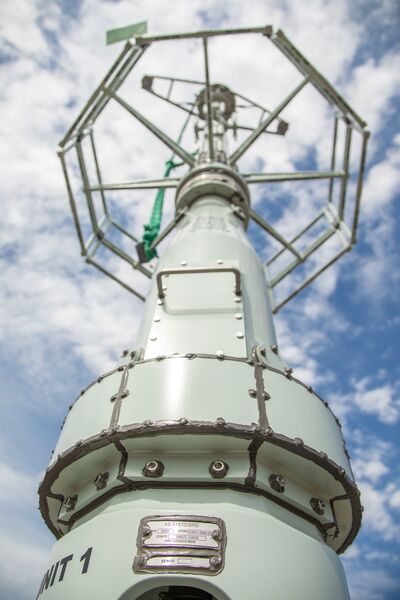
The new antenna array associated with Project Strongbow is shown here in testing at SwRI's San Antonio, Texas, facility. (SwRI)
The Royal Canadian Navy (RCN) has begun retrofitting an upgraded communications eavesdropping suite on its 12 Halifax-class frigates under Project Strongbow.
Work has started on the implementation phase, according to Canada's Department of National Defence (DND), with initial operational capability (IOC) planned for 2025. Initial shipboard installations on three frigates are following now-completed environmental qualification and software regression testing.
Project Strongbow is designed to provide the RCN with an enhanced communications direction finding (COMM DF) and signals intelligence (SIGINT) capability by upgrading the existing AN/SRD-505 communications intelligence system. The new system, designated AN/SRD-506, is to detect and analyse complex radio signals.
The Strongbow project has an approved budget of CAD116 million (USD84.5 million). The main acquisition contract was let in 2020 to Southwest Research Institute (SwRI), the US-based original equipment manufacturer, reflecting the fact that a significant portion of the legacy COMM DF fit is maintained. For SIGINT technology, the upgrade was acquired non-competitively through a government-to-government contract.
“Work is under way on the first installs to be completed on HMCS Toronto , HMCS Calgary, and HMCS Halifax in 2025,” a DND spokesperson told Janes on 9 November. “Supporting infrastructure for testing and trials at the Naval Electronic Sensor Test Range (Atlantic/Pacific) will be implemented in the spring 2025 timeframe to support initial sea acceptance trials.”
Upgrades are being performed during routine planned docking work periods and extended work periods for the Halifax-class ships. “IOC is expected in 2025, with all upgrades on the Halifax-class frigates expected to be completed by the end of 2031,” the DND told Janes .
Looking to read the full article?
Gain unlimited access to Janes news and more...



